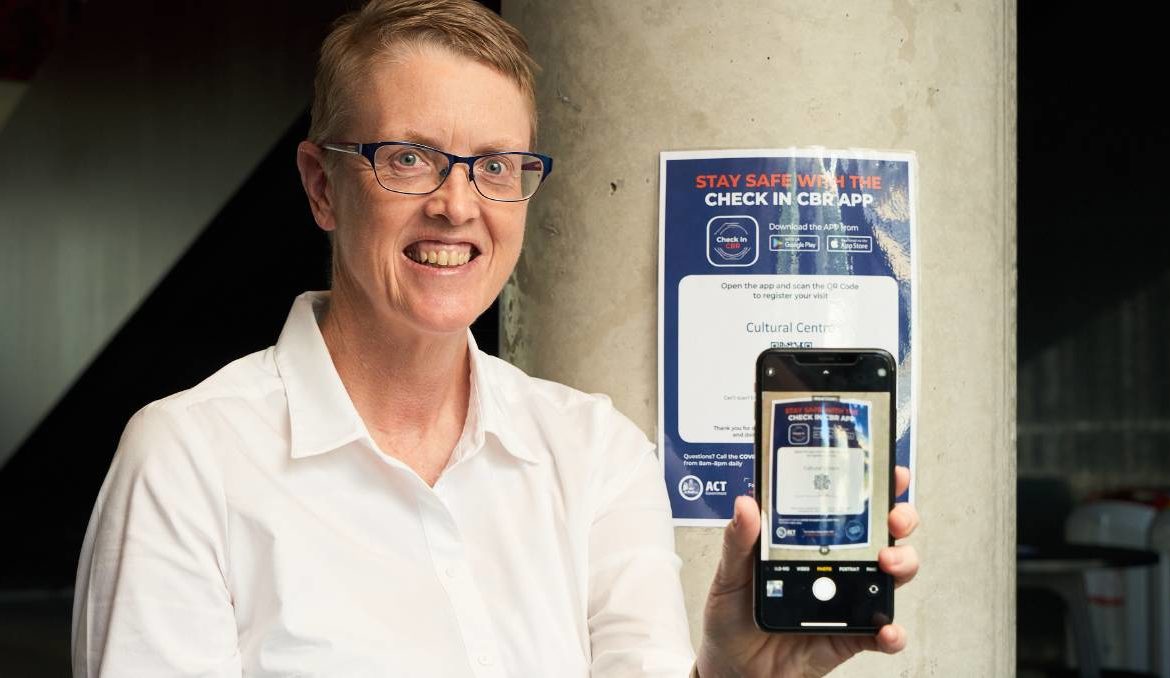news, act-politics,
Since the COVID-19 outbreak, Australian National University staff and students have relied on pens and paper to track their movements in case there were a case on campus. But that will all change this week when the university rolls out the ACT government’s new Check In CBR app across the whole campus. People will be asked to scan a unique QR code every time they access a floor on a building, lecture theatres, residential accommodation or businesses. It’s been a complex roll-out, with more than 600 individual QR codes created. ANU’s public health lead Professor Tracy Smart says the app will be a key part of the university’s transition to more in-person classes next year. The university initially asked students to keep a written diary of their movements across campus, but says the app will be far more effective. “It’s also a reminder that even though things are starting to look a lot more normal, there is still a COVID threat out there,” she said. “It reminds people this is the COVID normal.” Businesses and venues across the territory will from Wednesday be able to increase the capacity indoors from one person per four square metres to one person per two square metres. But it comes with a catch – they must be using the government’s Check In CBR app. Venues have until December 16 to register to meet this requirement. Since launching in early September, more than 2700 venues have been registered with Check In CBR and the app has been downloaded more than 80,000 times. Tasmania and the Northern Territory have recently implemented rebranded versions of the ACT-made platform. “With the whole campus using the CBR Check In app, our disease detectives will be able to quickly and effectively contact trace any case that may be linked to the university,” Health Minister Rachel Stephen-Smith said. “This will help to keep staff, students and our entire community safe.” Professor Smart said the university would be returning to about 50 per cent capacity of its classes next year. “In the second semester this year we did return to campus at ANU but it was still mainly online teaching,” she said. “Next year we think the balance will tip back more to face-to-face learning. “We’ll still be offering online options for courses because there are still quite a few students who haven’t been able to get back to camps.”
/images/transform/v1/crop/frm/fdcx/doc7df6rxdthl31k2kevcck.jpg/r2_140_2998_1833_w1200_h678_fmax.jpg
Since the COVID-19 outbreak, Australian National University staff and students have relied on pens and paper to track their movements in case there were a case on campus.
People will be asked to scan a unique QR code every time they access a floor on a building, lecture theatres, residential accommodation or businesses.
It’s been a complex roll-out, with more than 600 individual QR codes created.
ANU’s public health lead Professor Tracy Smart says the app will be a key part of the university’s transition to more in-person classes next year.
The university initially asked students to keep a written diary of their movements across campus, but says the app will be far more effective.
“It’s also a reminder that even though things are starting to look a lot more normal, there is still a COVID threat out there,” she said.
“It reminds people this is the COVID normal.”
Businesses and venues across the territory will from Wednesday be able to increase the capacity indoors from one person per four square metres to one person per two square metres.
But it comes with a catch – they must be using the government’s Check In CBR app.
Venues have until December 16 to register to meet this requirement.
Since launching in early September, more than 2700 venues have been registered with Check In CBR and the app has been downloaded more than 80,000 times.
“With the whole campus using the CBR Check In app, our disease detectives will be able to quickly and effectively contact trace any case that may be linked to the university,” Health Minister Rachel Stephen-Smith said.
“This will help to keep staff, students and our entire community safe.”
Professor Smart said the university would be returning to about 50 per cent capacity of its classes next year.
“In the second semester this year we did return to campus at ANU but it was still mainly online teaching,” she said.
“Next year we think the balance will tip back more to face-to-face learning.
“We’ll still be offering online options for courses because there are still quite a few students who haven’t been able to get back to camps.”







